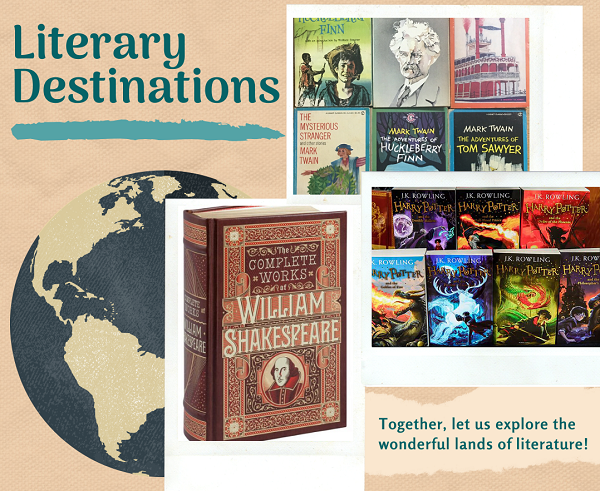Lots of readers actively seek out ways to get closer to the books and authors they love. Whether it’s going to signings, reading fanfiction or buying merchandise, there are many ways to enjoy your favourite reads and express your appreciation that go beyond the page. One of these methods is to actually travel to a destination that was special to the author or even featured within the story itself.
The former comes in several different flavours. You have the places where the author was born or died; the house where William Shakespeare was born in Stratford upon Avon plays host to many thousands of visitors a year. Then there are the houses where the authors worked on their most famous works; Jane Austen’s House museum allows you to see not just the little dining room where she wrote but even the tiny table she sat at to work on Pride and Prejudice (her back must have ached terribly!). You can tour Mark Twain’s house, peer in through the window of Dylan Thomas’s tiny hut on a welsh cliff and visit the Yorkshire parsonage where the Bronte siblings lived and wrote. Lastly, there are more public places (like the Elephant House Café in Edinburgh where J. K. Rowling spent hours at a time writing) where the authors enjoyed spending time or found the peace to work on their books. Visiting these sites helps some people feel closer to a writer they admire, while for others it’s an interesting opportunity to learn about how they lived. Sometimes this can backfire for authors who happen to still be alive: Peter Mail, who wrote wildly successful novels about Provence in France, found that he had described his house so well that the following year tourists turned up unannounced every day demanding lunch and guided tours!
The second type of literary location is a little more spiritual than that. Visiting a location that features in a book is more of an act of imagination as there isn’t really anything but the author’s words tethering the story to that place. Some locations have really embraced the fame and the opportunities that come with it: Kings Cross station boasts an HP themed gift shop and photo booth, for instance. Others are really just places (like the towns in Provence that Mayle described so vividly) that are only as significant as your connection to the source material can make them. Yet, they still have a powerful draw for people who want to envisage something the way the author intended it or to stand where the characters ‘did’. (I once spent hours looking for a very particular street address in Paris thanks to an obscure series of detective novels).
Whether or not you feel by visiting the room of a famous writer that you’ll somehow understand them more profoundly or you’re simply curious to see where Shakespeare learned to tie his laces, literary destinations hold a special kind of magic for many readers.
